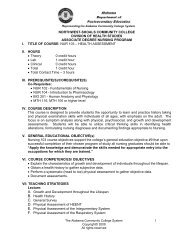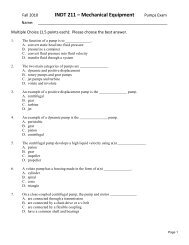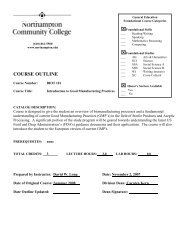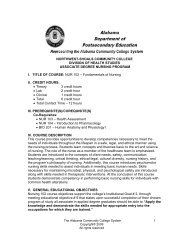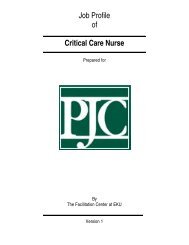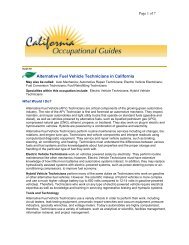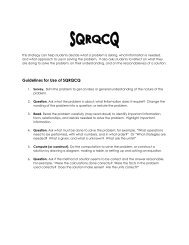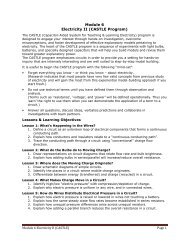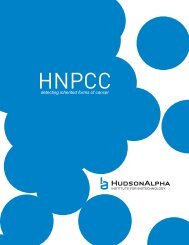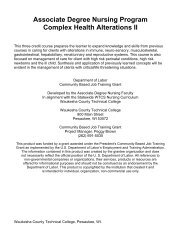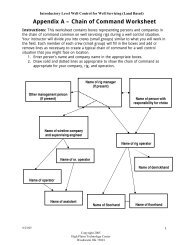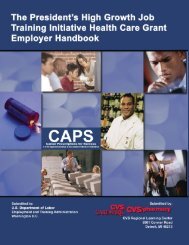i. Module 4 Fluids and Thermodynamics ... - Workforce 3 One
i. Module 4 Fluids and Thermodynamics ... - Workforce 3 One
i. Module 4 Fluids and Thermodynamics ... - Workforce 3 One
Create successful ePaper yourself
Turn your PDF publications into a flip-book with our unique Google optimized e-Paper software.
<strong>Module</strong> 4: <strong>Fluids</strong> & <strong>Thermodynamics</strong>Instructors GuideLesson 1: Bell Jar ExperimentsHave students work in groups of 2. Provide each group with the following:Bell Jar SetSilicone based lubricant (to lubricate the orings)Large <strong>and</strong> small marshmallowsCan of shaving creamHot liquid (water or coffee)Small balloonThe micro bell jar enables you to create a vacuum to learn about air pressure <strong>and</strong> its effectson temperature <strong>and</strong> the volume of objects. The syringe <strong>and</strong> one-way check valve systemconstitute the vacuum pump.PartsA – Bell Jar with top connectorB – Bottom PlateC – “O” ringD – Hose with one-way valveE – Hose with T <strong>and</strong> check valveF – SyringeG – Plastic cupH – Suction cupBasic Setup & Operation1. Assemble the Vacuum pump asshown in Figure 1.The fitting from the side-arm of theT connects to the syringe with lightfinger pressure <strong>and</strong> a partial turn.The other fitting connects to part Dwith a partial turn.2. Attach part E to the connector on thetop of the bell jar. (Figure 2)A turn of approximately one-third isall that is needed to make theconnection secure.Do not over-tighten! Figure 1 Figure 2<strong>Module</strong> 4 Student Guide <strong>Fluids</strong> & <strong>Thermodynamics</strong> Page 2



